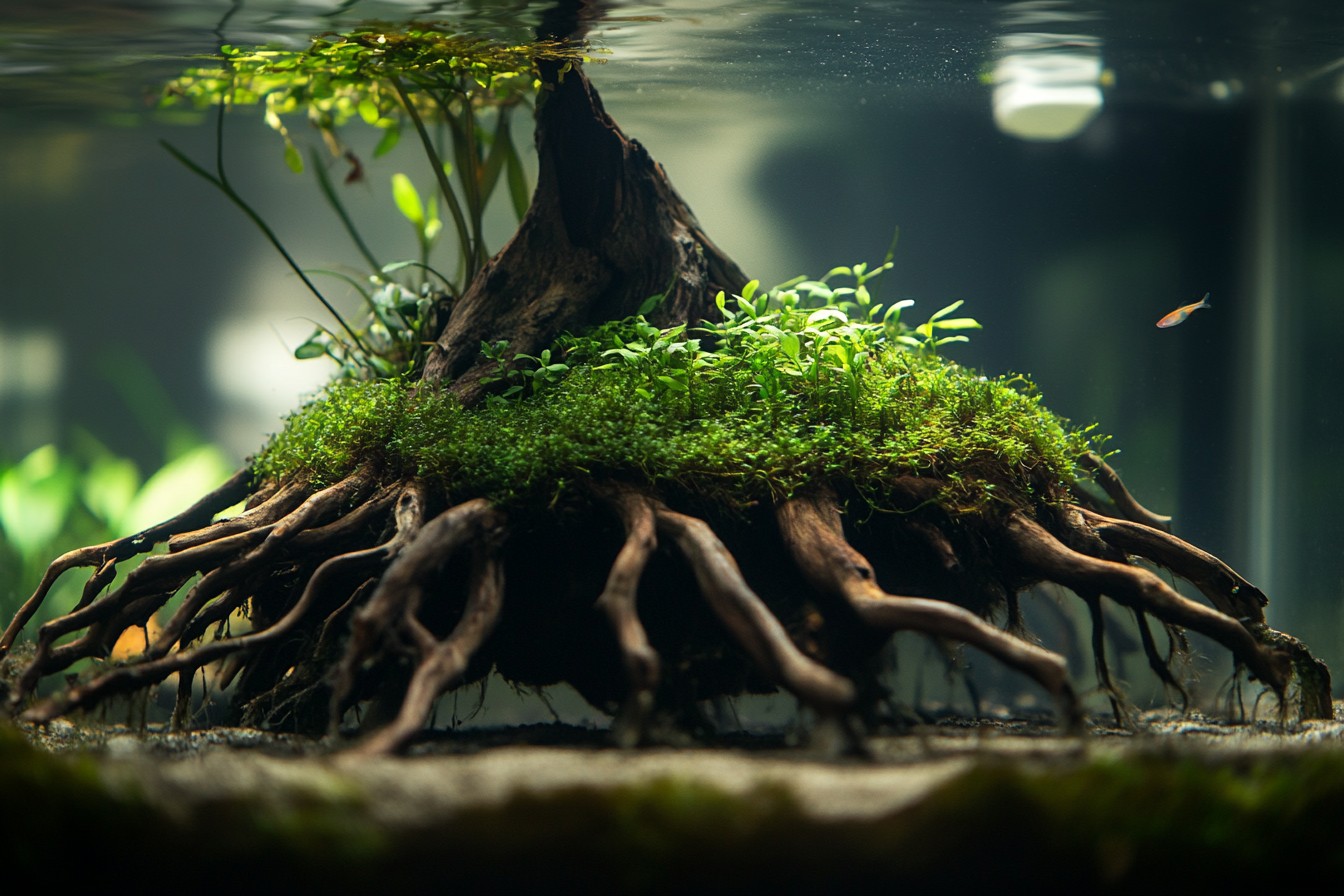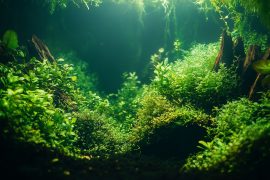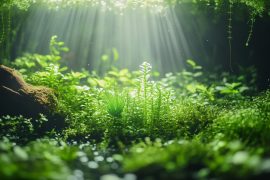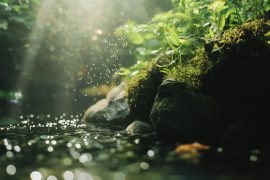The first time I tried to incorporate mangrove roots into an aquascape, I flooded my apartment. Not a little “oops, grab a towel” spill, but a legitimate, call-the-downstairs-neighbor-to-apologize kind of flood. It happened because I’d failed to properly secure a massive piece of root system that decided—approximately three hours after I’d left for dinner—to shift position, knocking the glass lid into the water and displacing about fifteen gallons onto my hardwood floors.
My downstairs neighbor Mark, who has since become a good friend (nothing builds relationships quite like water dripping from someone’s ceiling light fixtures), still introduces me at building meetings as “the fish guy who made it rain in my living room.” Fair enough. That spectacular failure taught me more than any success could have. Mangrove root systems are architectural marvels, but they’re also stubborn, challenging, and completely worth the effort when you get them right.
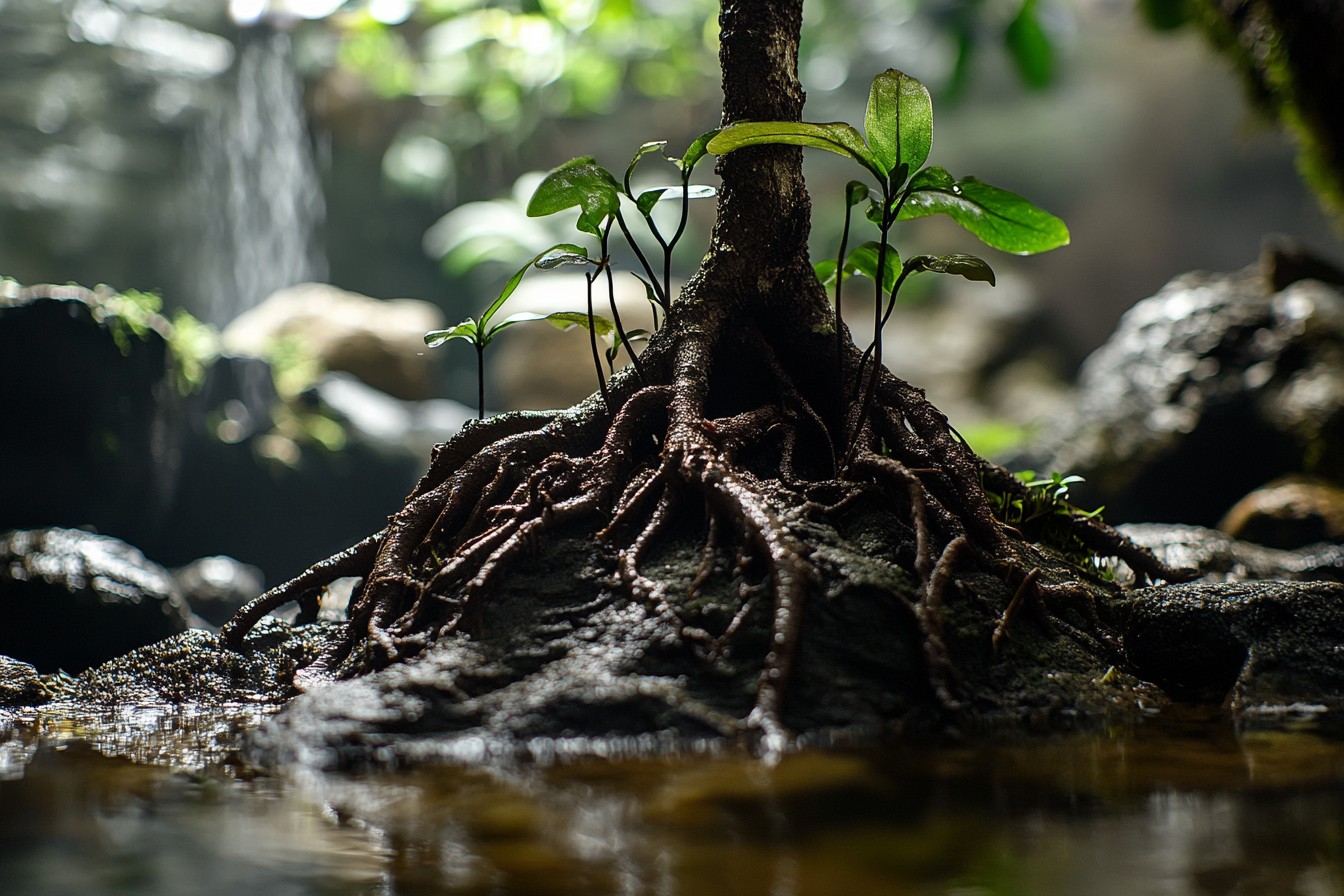
After that first disaster, I spent months researching, experimenting, and developing techniques that have since become the foundation of some of my favorite tank designs. Real mangrove roots—the kind that form those incredible arching structures in coastal shallows—have this otherworldly quality that no other hardscape material can match. They’re simultaneously organic and architectural, creating natural bridges between underwater environments and the world above.
When done correctly, a tank featuring emergent mangrove roots feels like a portal to somewhere wild and primordial. The hunt for the perfect pieces is half the battle. I’ve waded through more mosquito-infested coastal areas than I care to remember, usually returning home with nothing but mud-soaked clothes and fresh bug bites for my troubles.
The really good pieces—the ones with character and interesting shapes—are rarely just lying around waiting to be collected. And honestly, most coastal areas have restrictions on harvesting anyway, as they should. These days, I source most of my material from specialty aquarium suppliers who work with sustainable harvesters, though I admit to still keeping an eye out during kayaking trips.
Sometimes nature offers up the perfect piece, and when it does, I never say no (while always making sure I’m not violating any regulations). Preparation is crucial and time-consuming. After that first disaster, I developed what my assistant Mia calls my “mangrove protocol”—a three-week process that transforms raw roots into tank-ready hardscape elements.
It starts with a thorough cleaning to remove bark, loose material, and any critters that might have taken up residence. Then comes a two-day soak in a weak bleach solution to disinfect, followed by a week-long freshwater soak with daily water changes to remove any remaining contaminants. The next step is where patience truly becomes a virtue.
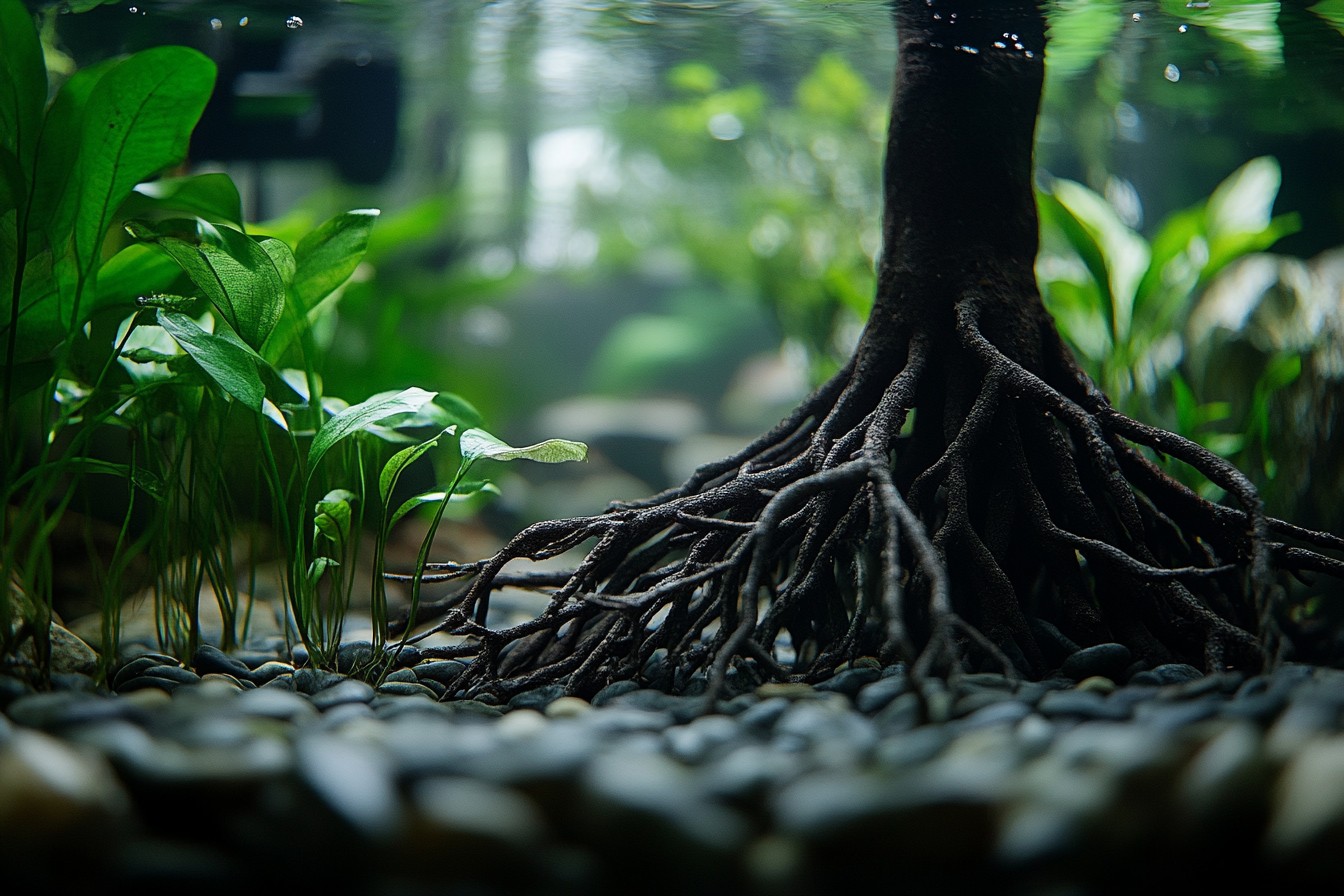
I let the roots dry completely—and I mean bone dry, which can take days or even weeks depending on the size and density of the wood. This step is critical because it allows me to identify any potential issues with buoyancy or structural integrity before they become problems in the tank. Finally, I treat the wood with aquarium-safe sealant, but only in strategic areas.
The parts that will be submerged get left natural to allow beneficial bacteria to colonize, while sections that will emerge above the water line get a light treatment to prevent rot and fungal growth. It’s a balancing act—too much sealant and you lose the natural look and texture; too little and you’re setting yourself up for decomposition issues down the line. The technique that revolutionized my approach came from a spectacular failure (noticing a theme in my learning process?).
I was setting up a display tank for a restaurant in South Beach, featuring a large mangrove root structure that extended about 18 inches above the water line. Everything looked perfect at setup, but three days later, I got a panicked call from the owner. The beautiful emergent structure had begun to develop a thick, white fungal growth that looked like something from a horror movie.
After that expensive lesson, I developed what I call the “transition zone treatment.” The area where wood crosses from underwater to above—those crucial few inches above and below the water line—gets special attention now. I create a mixture of aquarium-safe silicone and fine activated carbon powder, which I apply in a thin layer right at the water line. The carbon helps prevent fungal bloom, while the silicone creates a nearly invisible protective barrier.
Securing these pieces properly is an art form I learned the hard way. My current method involves creating custom acrylic brackets that attach to the tank bottom or back wall, carefully positioned to be hidden by substrate or plants. For particularly large or complex pieces, I sometimes design a hidden base plate that sits beneath the substrate, providing anchor points that keep everything stable without being visible.
The magic really happens when you start integrating plants with these root structures. Epiphytes like Anubias, Bucephalandra, and various microsorums attach naturally to the submerged portions, creating these lush underwater gardens. Above the water line, I’ve had great success with air plants (Tillandsia species), certain bromeliads, and even some terrestrial mosses in the splash zone.
My client Rachel, an architect with an almost unsettling attention to detail, challenged me to create what she called a “living crossover”—a tank where the boundary between water and air felt seamless. For her office tank, I used a complex mangrove root structure that created natural “islands” at the water surface. On these, I established miniature wetland environments with emergent aquatic plants like Hydrocotyle tripartita and Eleocharis vivipara, which grew both below and above the water line.
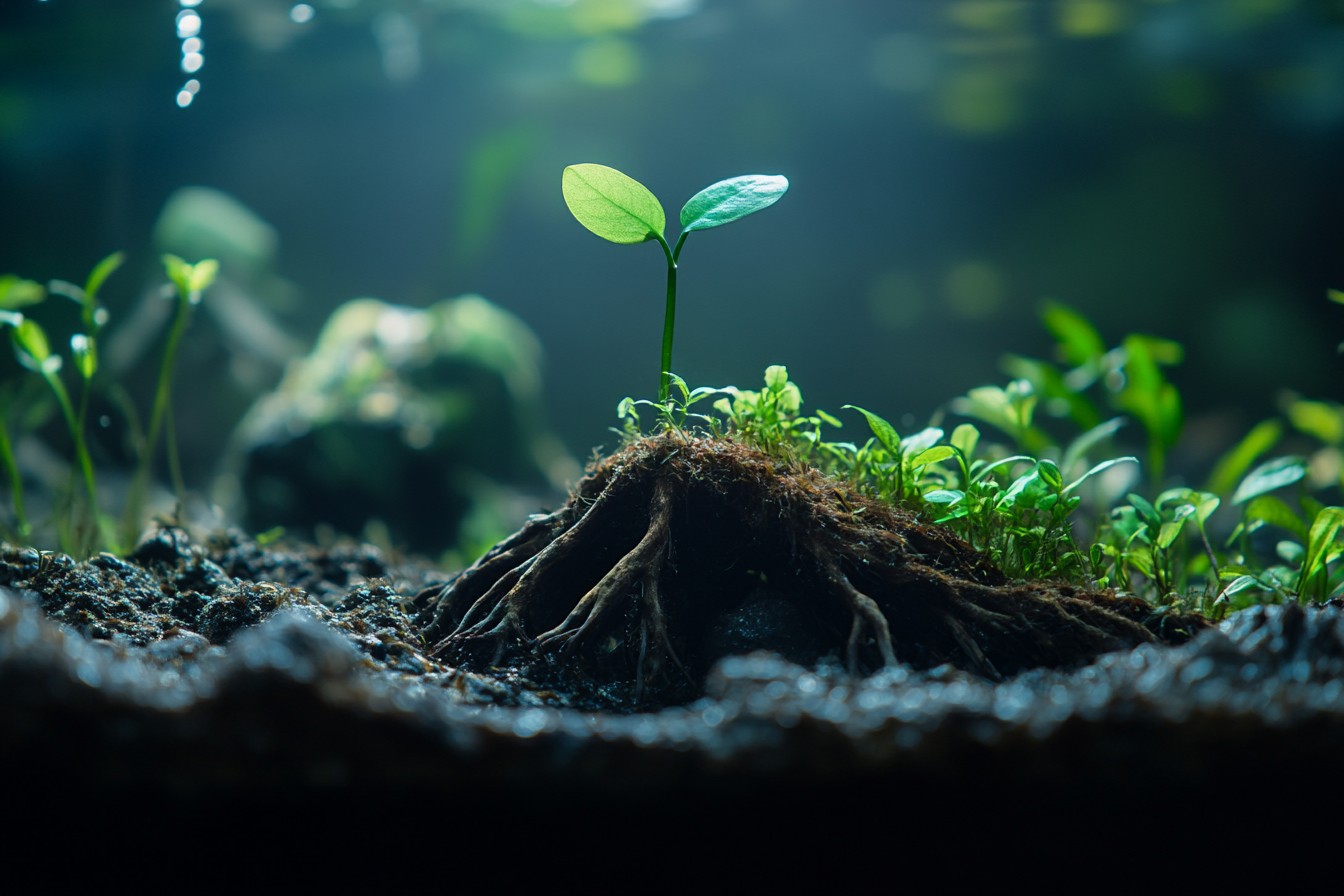
The real breakthrough came when I added a custom misting system that maintained humidity around the emergent sections. This allowed me to use plants that typically wouldn’t survive in open air but thrived in the misty microclimate created around the roots. The result was this ethereal, misty landscape that looked like something from a fantasy novel—part underwater world, part terrarium, entirely captivating.
The challenges are constant with these setups. Water level maintenance becomes critical—too much evaporation and your carefully balanced transition zones dry out; too frequent topping off and you never achieve the mineral deposits that add character to emergent wood. I’ve taken to installing small, hidden auto-top-off systems for clients who don’t want to monitor levels daily.
Algae management takes on new dimensions too. The high light levels needed for emergent plant growth can trigger algae blooms underwater. I’ve found that heavy initial planting with fast-growing stem plants helps establish balance quickly, preventing algae from gaining a foothold while the tank matures.
Perhaps the most rewarding aspect of working with emergent mangrove roots is watching them evolve over time. Unlike fully submerged hardscapes that remain relatively static, these crossover environments change constantly. Mineral deposits create natural highlights on exposed wood.
Moss and algae develop patinas that soften harsh lines. Plants grow, intertwine, and create natural compositions that no human hand could design. My home office tank—the one I stare at during conference calls when I should be paying attention—features a five-year-old mangrove root system that barely resembles its original form.
What started as stark, architectural branches has evolved into a living sculpture, covered in microsorums underwater and various mosses above. Miniature orchids have taken root in the highest sections, while a colony of cherry shrimp has claimed the submerged portions as their domain. There’s something profoundly satisfying about creating these boundary-crossing environments.
Maybe it’s because they remind us that the neat divisions we create—water and air, aquatic and terrestrial—are human constructs. In nature, these boundaries are fluid, with entire ecosystems thriving in the in-between spaces. Or maybe I just like the challenge of making something that seems impossible work.
Either way, after years of soggy carpets, failed experiments, and occasional triumphs, I can confidently say that few things in this hobby are more rewarding than watching a client’s face when they see emergent roots done right for the first time—that moment of wonder when they realize they’re looking at not just an aquarium, but a window into a world that exists between worlds. Just make sure you secure everything properly. Trust me, your downstairs neighbors will appreciate it.
